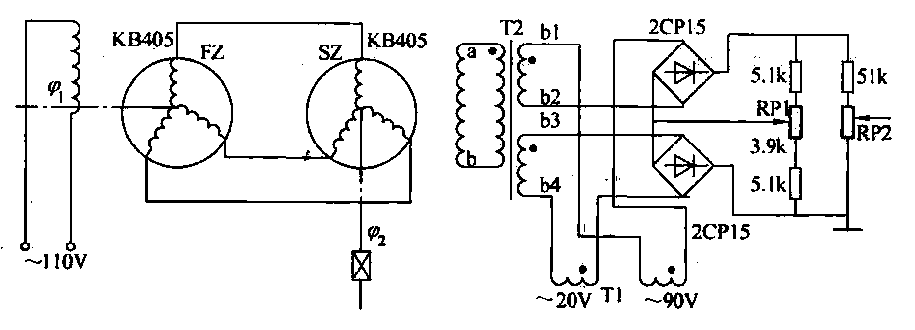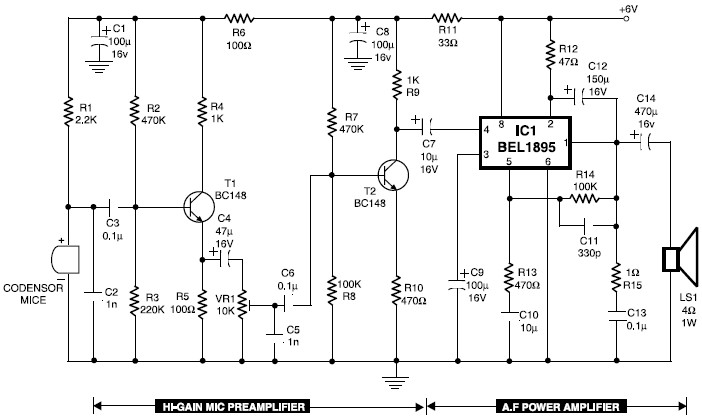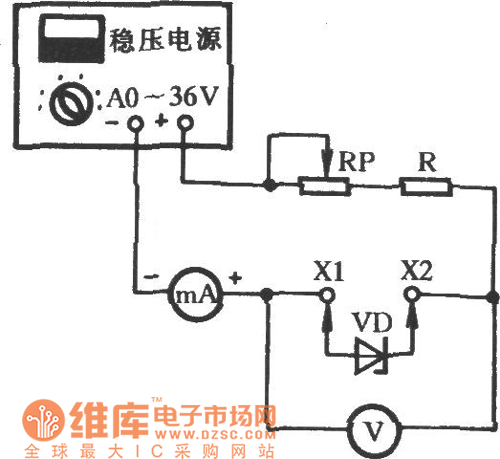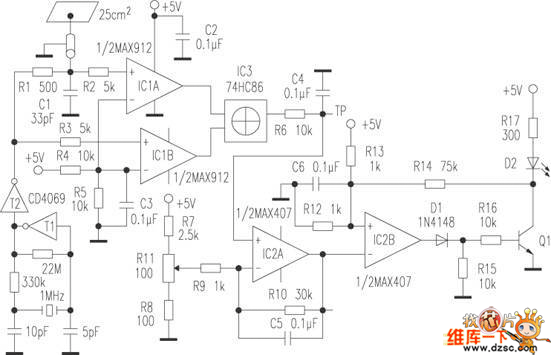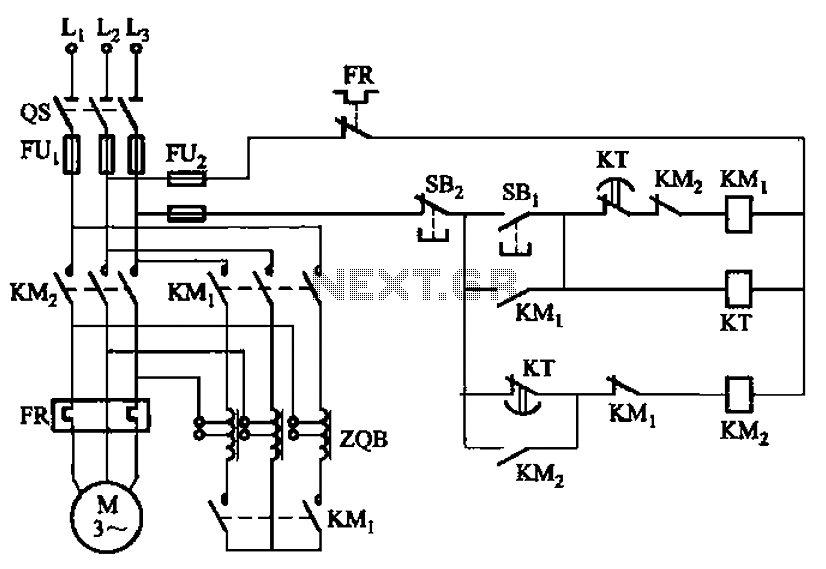
Digital counter demonstration circuit
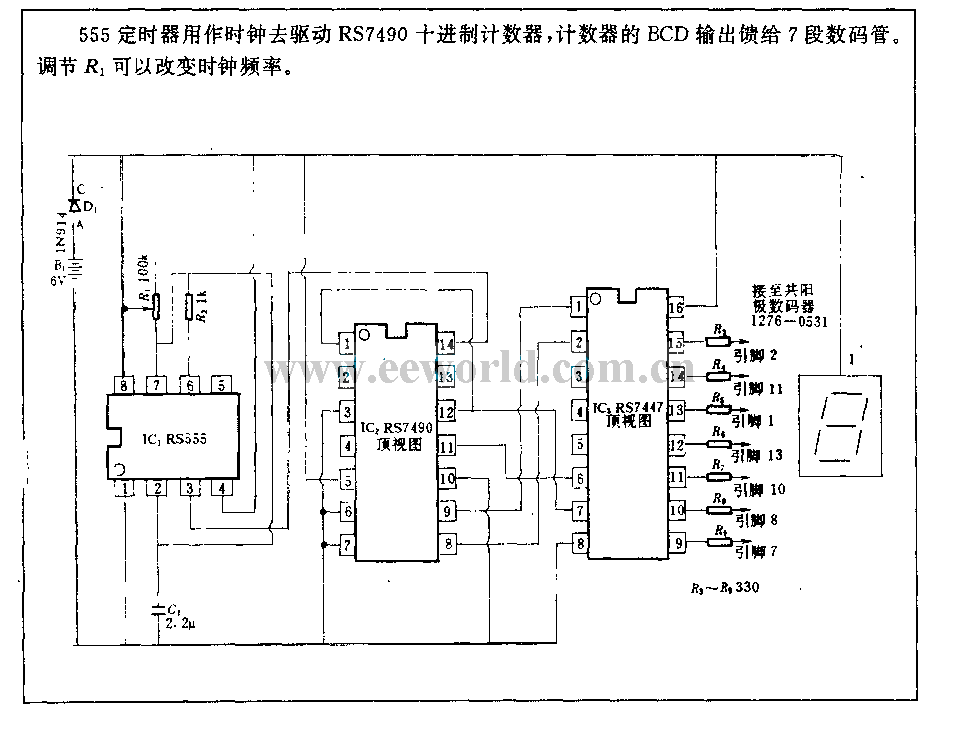
The 555 timer is utilized as a clock source to drive the RS7490 decimal counter, providing a BCD output to a 7-segment LED display. The clock frequency can be adjusted by changing the value of resistor R1.
The circuit operates by employing the 555 timer in astable mode to generate a continuous square wave signal. This signal serves as the clock input for the RS7490, which is a binary-coded decimal (BCD) counter. The RS7490 counts from 0 to 9 and outputs the corresponding BCD values. These outputs can then be connected to a 7-segment LED display, allowing for the visual representation of the counted value.
The frequency of the clock signal generated by the 555 timer is determined by the resistor R1, along with another resistor R2 and a capacitor C1, which are part of the timing network. The relationship between these components can be expressed by the formula for the frequency (f) of the output signal:
f = 1.44 / ((R1 + 2R2) * C1)
By adjusting R1, the frequency can be varied, thus controlling the speed at which the RS7490 counts. A lower resistance value for R1 results in a higher frequency, causing the counter to increment more rapidly, while a higher resistance slows down the counting process.
The RS7490 outputs four bits, which represent the decimal values from 0 to 9 in BCD format. Each output pin corresponds to a specific bit in the BCD representation. For instance, when the counter reaches the value '5', the outputs will reflect the binary combination of '0101'. These outputs can be directly connected to the segments of the 7-segment display, which will light up the appropriate segments to display the corresponding decimal digit.
In summary, the combination of the 555 timer and the RS7490 enables the creation of a simple yet effective digital clock circuit that can be visually monitored through a 7-segment display. The ability to adjust R1 provides flexibility in the clock frequency, allowing for customization of the counting speed.555 timer is used as clock to drive RS7490 decimal timer, BCD output to 7 section LED. To adjust R1 can change the clock frequency.. 🔗 External reference
The circuit operates by employing the 555 timer in astable mode to generate a continuous square wave signal. This signal serves as the clock input for the RS7490, which is a binary-coded decimal (BCD) counter. The RS7490 counts from 0 to 9 and outputs the corresponding BCD values. These outputs can then be connected to a 7-segment LED display, allowing for the visual representation of the counted value.
The frequency of the clock signal generated by the 555 timer is determined by the resistor R1, along with another resistor R2 and a capacitor C1, which are part of the timing network. The relationship between these components can be expressed by the formula for the frequency (f) of the output signal:
f = 1.44 / ((R1 + 2R2) * C1)
By adjusting R1, the frequency can be varied, thus controlling the speed at which the RS7490 counts. A lower resistance value for R1 results in a higher frequency, causing the counter to increment more rapidly, while a higher resistance slows down the counting process.
The RS7490 outputs four bits, which represent the decimal values from 0 to 9 in BCD format. Each output pin corresponds to a specific bit in the BCD representation. For instance, when the counter reaches the value '5', the outputs will reflect the binary combination of '0101'. These outputs can be directly connected to the segments of the 7-segment display, which will light up the appropriate segments to display the corresponding decimal digit.
In summary, the combination of the 555 timer and the RS7490 enables the creation of a simple yet effective digital clock circuit that can be visually monitored through a 7-segment display. The ability to adjust R1 provides flexibility in the clock frequency, allowing for customization of the counting speed.555 timer is used as clock to drive RS7490 decimal timer, BCD output to 7 section LED. To adjust R1 can change the clock frequency.. 🔗 External reference

